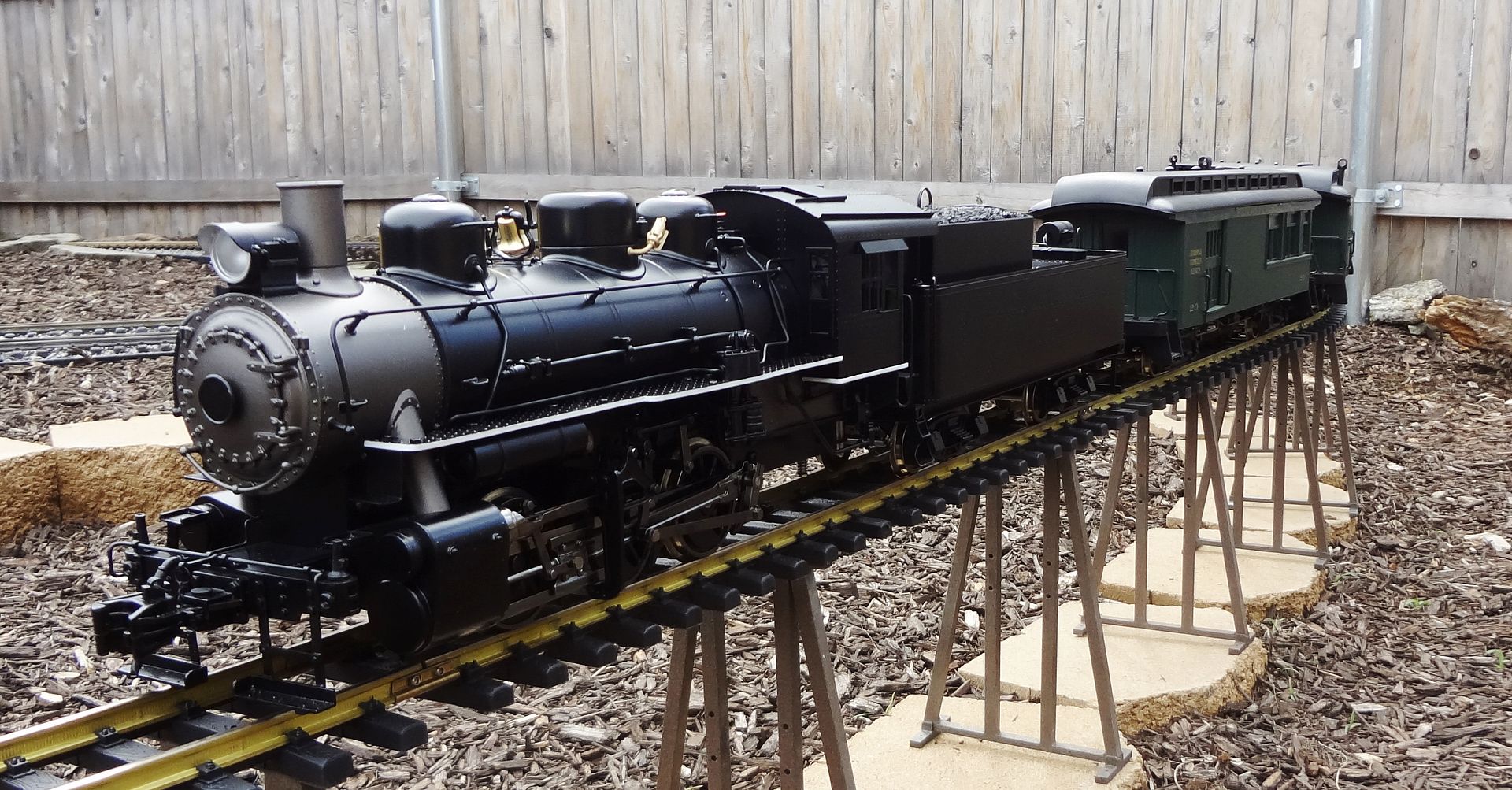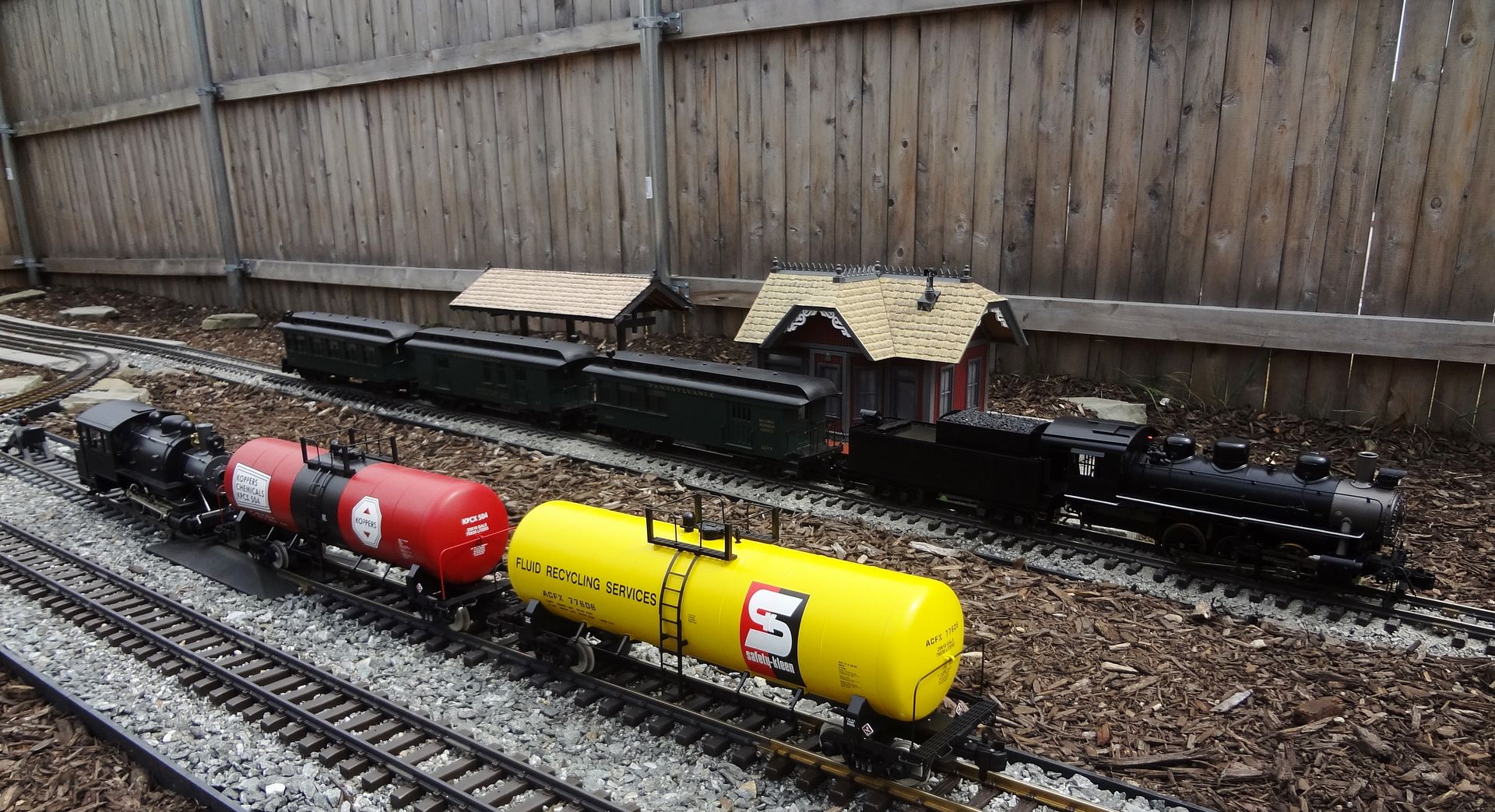What a piece of _ _ _ _ !!
That’s all my review would have said if I wrote it after the first 5-minutes of operation 
I listened to others that stated before running this engine to make sure I removed all the drive rod screws and put some lock tight on them, so after picking up some blue lock tight that is exactly what I did.
I am not a technical person on everything trains, so my review will be pretty basic. The engine was shipped very nicely packed…almost to nice, I thought I was going to do damage to the engine trying to get it unpacked!
Plenty of weight for the engine, I know some have mentioned adding weight, I don’t see the need for my railway as when I ran it today it handled everything fine. Has a few little delicate pieces that you need to watch out for when handling…but then, so doesn’t every other locomotive that I own.
Before I set the train outside I went through and lubed everything up with some light oil, my only issue that I noticed (which may or may not end up being a big deal) is that the wheels on the tender don’t roll well at all. They seem very snug from the electrical pick ups that press on the back side of the wheels. Maybe in time they will free up a little and roll easier? Guess time will tell.
So for actual running performance…
I put the engine out on the track and powered it up slowly on it’s first pass around, wanted to make sure it would have no issues handling my 8’ diameter curves and it worked perfect. Nice and smooth and ran very well at very low speed.
So, seeing how everything was going well I decided to hook up my H-L-W passenger cars that I have (which I think looked great with this engine).
Wouldn’t you know, the train makes two complete laps around the railway and STOPS…I quickly run over to check it and don’t see anything readily noticeable as to why it would have just stopped. So I did the normal thing when a engine stops…slid the train forward a few inches to see if it was a track/conductive issue. Train started to move again, makes it through another curve and stops again…slid the train, again it was moving but it wouldn’t be for long.
This is where had I of written this review after the first 5-minutes of use, I would not of used some happy joyfull words to describe it!
So before getting to frustrated with it, I stopped, went inside and cooled off for a few minutes. I also got to thinking about what it could be causing the issue and my only thought kept coming back to the multipin connector that connects the tender to the engine. I had a hard time getting it to line up, and when it did line up I was not sure how hard I could press the connectors together without breaking them, so when I thought I had it all the way in I let it be. Well…come to find out, it wasn’t in all the way! After removing it and resetting it in again I was finally able to get it to snap into place.
That apparently was the issue because the train ran flawless for the next 5-hours!
Beautiful, smooth running, and very quiet. This is a great running locomotive, I was very pleased with its performance…so much I may want to get another one, especially at the price they are selling them for!
Here are a few pictures from today.


